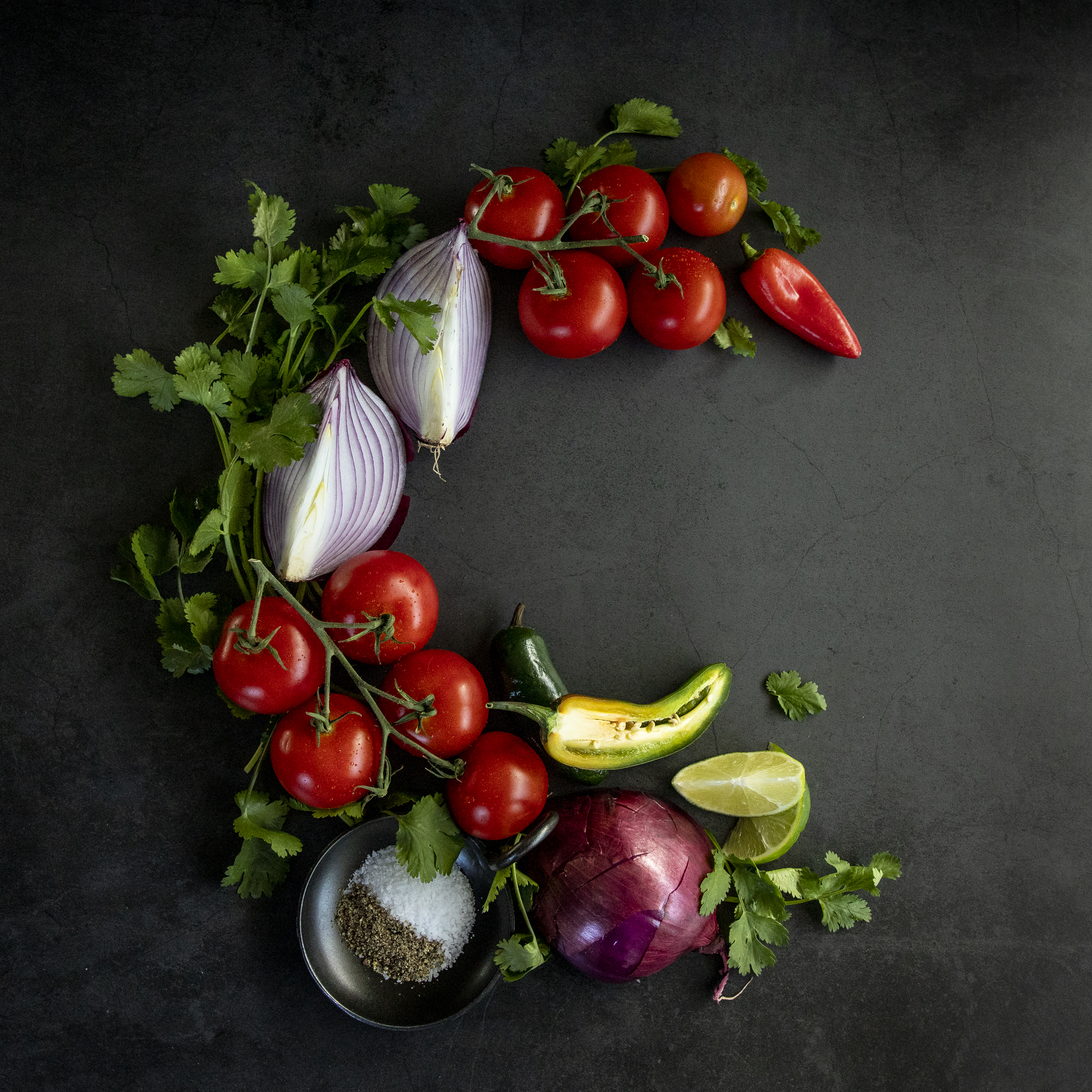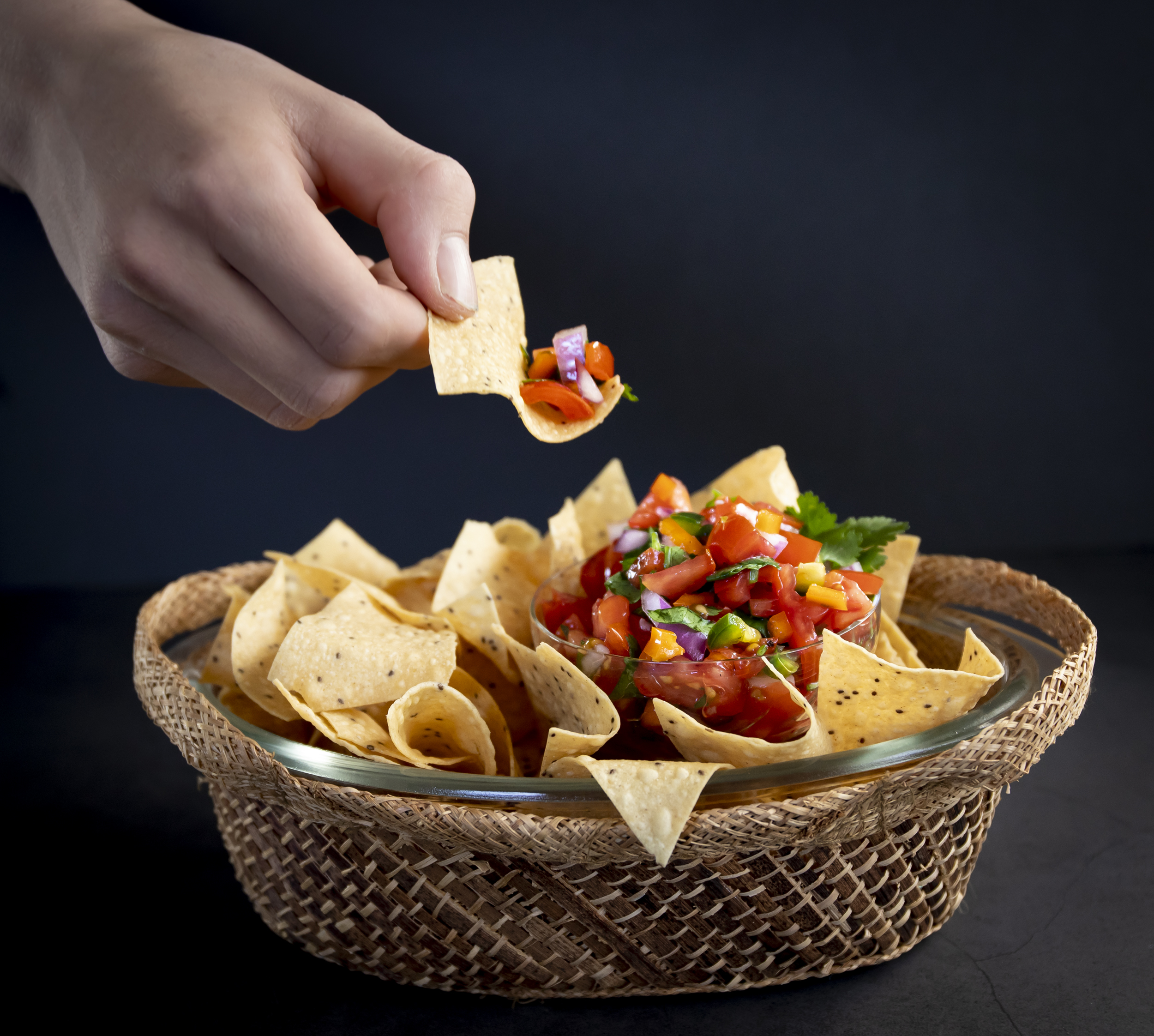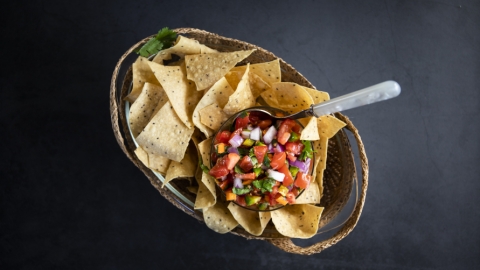Grow Your Own Salsa
In spring and early summer, the possibilities for my garden seem endless. Perusing my favorite seed catalogues and local nursery, I always end up with more plans than space. But each year I get better at growing the produce we like to eat most. One way I achieve this is by growing a theme garden—planting all (or most) of the ingredients for our favourite recipes.
One such theme garden idea to centre your produce around is salsa, which is always a favourite addition to tortillas and tacos and on grilled meat or fish. With the exception of limes, salsa ingredients grow well in our climate and are easy to cultivate. Plus, you don’t need a lot of space; this concept can be easily executed in a few containers on your patio or a small plot in your garden.
There are just five main ingredients: tomatoes, onion, jalapeño, cilantro and garlic. You will need two very large or three medium-to-large containers for this project. Deeper containers will keep plants from drying out too quickly. With the exception of cilantro, salsa veggies are heavy feeders, so fill your containers half and half with topsoil and compost.
Each ingredient has its own growing times and requirements, but by following a few tips and a simple plan, you can soon be preparing “fresh from your garden” salsa whenever a craving hits.
 What to choose and when to plant
What to choose and when to plant
Onion and garlic require a longer growing period than the other ingredients, so start with onion sets instead of seeds. Purple onions are beautiful, but you may prefer a sweeter white onion for raw eating. And while waiting for your bulb garlic to be ready, you can still access a little garlic flavour by planting some garlic chives. Your onions and garlic can be planted together in one pot as per package instructions.
For fresh salsa, sweet and juicy tomatoes shine; for canning salsa, a Roma or paste-type tomato with less water content is better. Many people prefer the texture and longer ripening period of indeterminate tomatoes. These tomato varieties tend to get very large, so be sure to choose one of the more compact varieties or pick a determinate bush.
Jalapeños are, of course, the classic pepper choice for salsa—but this is your garden, so choose what you like! A hotter pepper or a milder, sweeter pepper work equally well. Keep in mind that smaller peppers often reach maturity faster than larger varieties.
Tomatoes and peppers take similar amounts of time to grow. They are also both sun loving, so give these plants the sunniest spots for best results. You can buy starters from a nursery for a jump start on their growth, or start seedlings indoors as early as April. Plant the tomato and pepper seedlings in the same pot. Tomatoes can be set in deeply and any small branches below soil level trimmed before filling in with dirt.
Cilantro is the fastest growing of all these ingredients—and the easiest to grow. It is best to grow cilantro right from seed: sow a few seeds every two to three weeks for a summer-long supply. Cilantro is prone to bolting in the hottest days of summer, but there are a few things you can do to keep it happy: keep trimming it to encourage new growth, choose a bolt-resistant variety and keep it in a cooler spot or partially shaded by your tomatoes during the hottest days. Sow four to six cilantro seeds around the outside of the tomato container (or in its own if you are using three pots), leaving room for later sowings.
Do your best to keep your containers evenly watered, and enjoy your own garden-fresh salsa later this summer!






